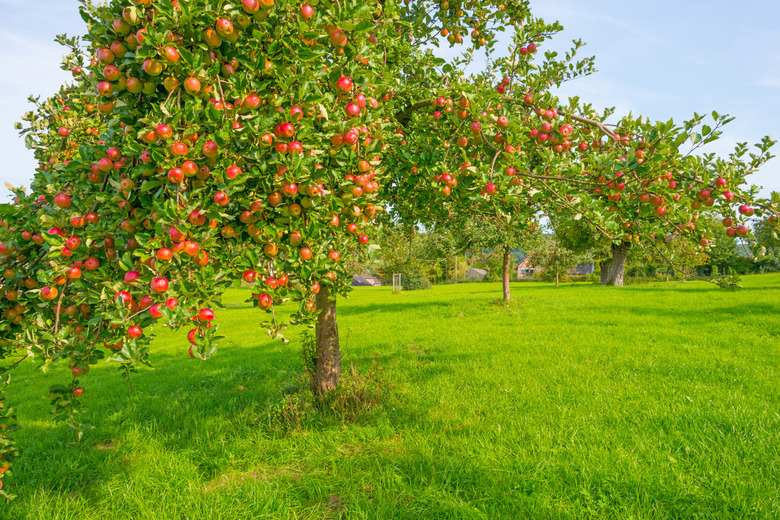Companion Plants For Fruit Trees
We may receive a commission on purchases made from links.
Companion planting creates an environment in the garden that encourages the quality of nearby crops. Placing the right plants together can enhance growth, improve the soil, and control the insect population.
The "Three Sisters" method of companion planting is an example of how Native Americans created a system of companion planting using corn (Zea mays), beans (Phaseolus vulgaris), and squash (Cucurbita). Stalks of corn provided support for climbing beans, which didn't compete with the corn, and provided their own nitrogen, while the squash created a dense cover to shade out weeds that would affect the corn and beans. This system provided a balanced diet from a single plot of land.
Grow Garlic Plants
Grow Garlic Plants
Garlic (Allium sativum) used in companion planting repels aphids, caterpillars, mites, and Japanese beetles. Planted at the base of peach trees (Prunus persica), garlic repels borers and prevents leaf curl. Planted near apple trees (Malus domestica), garlic protects against apple scab. Herbs like garlic are considered beneficial nursery plants because they attract good insects by providing shelter, pollen, and nectar. Beneficial insects include lady beetles, lacewings, wasps, and parasitic flies, which help control pests that can damage your fruit crops.
Pair Comfrey With Fruit Trees
Pair Comfrey With Fruit Trees
Comfrey (Symphytum officinale) is a beneficial companion plant for the avocado tree (Persea americana) and most other fruit trees by serving as a trap crop for slugs. A trap crop pushes insects away from other essential plants with a disagreeable taste or a bad smell. The comfrey plant also accumulates phosphorus, calcium, and potassium and helps keep the surrounding soil moist and rich.
Add Chives to Apple Trees
Add Chives to Apple Trees
Chives (Allium schoenoprasum) help prevent apple scab when grown under apple trees. As a repellent for mites and nematodes, chives, along with garlic, are one of the most popular repellents because of their powerful ability to repel beetles and aphids.
Plant Nasturtiums Near Fruit Trees
Plant Nasturtiums Near Fruit Trees
When planted under fruit trees, nasturtiums (Tropaeolum majus) deter squash bugs, white flies, cabbage moths, potato beetles, and the striped pumpkin beetle. They also act as a trap crop for aphids. When planted in a circle around apple trees, nasturtiums limit wooly aphid damage.
Deter Pests With Lavender
Deter Pests With Lavender
Lavender (Lavandula angustifolia) repels fleas, ticks, and mice from fruit trees. When planted near and under fruit trees, lavender will deter the coding moth, while attracting beneficial insects, such as butterflies.
Try Tansy Plants
Try Tansy Plants
When planted around fruit trees, tansy (Tanacetum vulgare) repels flying insects, Japanese beetles, squash bugs, cucumber beetles, moths, and ants. Tansy also concentrates potassium in the soil, which can impact fruit size, quality, and yield.
Other Companion Plants
Other Companion Plants
Clover (Trifolium) has long been used as a companion plant around apple trees and will attract predators of the woolly aphid. Onions (Allium cepa) will repel borers, slugs, cutworms, and mites. Planting leeks (Allium porrum) will help improve fruit tree growth. Modern agriculture relies on chemicals and machinery to grow crops and control insects, while home gardeners can reap the benefits of companion planting to attract beneficial insects and avoid the use of insecticides on fruit trees.
